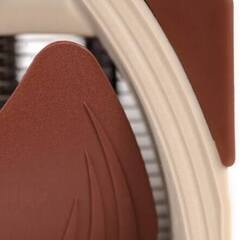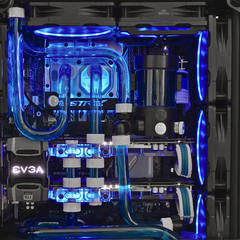-
Posts
209 -
Joined
-
Last visited
Awards
This user doesn't have any awards
About Noctua Fan Fan
- Birthday Nov 12, 1990
Profile Information
-
Gender
Male
-
Location
UK
-
Interests
Video games, IT, technology and long walks with doggo
-
Biography
IT professional
-
Occupation
Unified Communications
System
-
CPU
Ryzen 7 2700X
-
Motherboard
ASUS ROG STRIX X370-F
-
RAM
16GB, 3200mhz (Corsair Vengence RGB)
-
GPU
2070 Super
-
Case
O-11 Dynamic
-
Storage
Lots
-
PSU
750W Cronus Modular
-
Display(s)
3 (1x 144hz)
-
Cooling
8+ Noctua fans (DM me for specifics)
-
Keyboard
Razer Hunstman Elite TE
-
Mouse
Razer Deathadder Elite
-
Operating System
Windows 10 (and Linux VMs)
Recent Profile Visitors
936 profile views
Noctua Fan Fan's Achievements
-

Ryzen 3000 to 4.7Ghz
Noctua Fan Fan replied to Noctua Fan Fan's topic in CPUs, Motherboards, and Memory
I doubt I could ever get it, and that's not my goal here. Sorry, I should have been clearer. My objective is to increase my in-game FPS as much as possible,knowing my GPU is not the bottleneck. Using Ryzen Master I aim to have two profiles. Profile 1: (DAILY USE) My current 4.3 all-core @ 1.3V max] Profile 2: (GAMING USE) Different core boosts for the "gaming cores" to achieve higher boost clocks. (if this would work and be safe) With that context, what impact could changing these single cores have? (in addition to the questions above) -
Hey everyone! So I'm working on trying to eek out some more performance in games. From testing my 3 most played games I can see that CCD0, CCX0, C01 and C03 are the two cores games REALLY push and use. My current overclock is 1.3V peak and 4300 on every core. I get a really strong 7500+pts using this in cinebench, but I'm not getting the fps in games I'd hope to. My GPU is not the bottleneck at all. My question then: With Ryzen 9 3900XT, will I lose performance by boosting just those two cores and leaving the others at 4.3Ghz as below: Will I cause any damage to the CPU? Will this work? Will I (in theory) gain more stable FPS in games with less dips? Is this the only way I can achieve the advertised up to 4.7Ghz? Am I missing anything important? My cinebench all-core scores run lower as a result of this change. I've yet to test single core and I've yet to do an avg fps / 1% low fps test in games since I dont want to hurt the CPU if my thought process is stupid. I've done my due dilligence with reading guides and reviews and such, but now I need the specific help and guidance I can only get from this awesome community. Full system specs in my signature.
-
Yeah you can.
-

The Ultimate Noctua PC (15 fans + Custom loop + case mods)
Noctua Fan Fan replied to Noctua Fan Fan's topic in Build Logs
This case, I kid you not, is better than the O11. WAY more space at the back, a really nice finish and enough mounting in the aifrlow cutouts to add extra fans. I fit way more in this than the original O-11. Which I have developed a real hatred for. Thus my front panel mod -

The Ultimate Noctua PC (15 fans + Custom loop + case mods)
Noctua Fan Fan replied to Noctua Fan Fan's topic in Build Logs
I get downvoted to hell when I comment on those generic builds on Reddit lol -
Happy weekend all! I posted a while ago a year ago a previous version of this same concept, but there were a few things I absolutely didn't like. Enter my newest attempt at the "Ultimate Noctua Build". Featuring 5 different kinds of Noctua fan, 15 fans in total, a full custom loop and some very, very nice idle temps for this usually hot CPU. Here is the eye candy! SCROLL DOWN FOR THE BUILD LOG, NOTES, FIRST RUN OF THE PUMP VIDEO AND BENCHMARKS ETC. And here is a link to an imgur gallery which shows off the RGB potential and the flow meter: https://imgur.com/gallery/RZF8GzD Design Brief: To build a PC with as many Noctua fans in a mid-tower case as possible to provide ultimate cooling with a full water loop with 2* 360mm radiators. Diminishing returns are not a consideration. Parts: CPU: Ryzen 9 3900XT GPU: Nvidia RTX 2080ti RAM: T-Force 8Pack Special Edition 2*8GB @ 3600CL14 MOBO: Aorus Elite B550 Case: Phanteks Metallicgear Neo Qube Fans: 6* NF-S12-A, 3* NF-A12x15, 3* NF-A12x25, 2*NF-A8, 1*NF-P12 Other: Corsair D5 pump and CPU block, Corsair rads, EK Vector GPU block, Barrow flow meter and a bunch of barrow, bitspower and EK fittings. Phanteks GPU bracket Custom cables from PSlate Customs. Front Panel Mod: Made by Coldzero EU custom for me to mount fans externally so as not to affect the internal loop. I'm really happy with how it came out and it adds an extra 3 fans to the design, not making it look like any other O-11 style case. I get the dual chamber design and no airflow sacrifice. I'm happy with that. Benchmarks: Please see the most recent/highest scores in my signature! Overclocking: I actually set a 1.3v limit with a 4300 all core boost max for the CPU and get both better results and temperatures than stock and PBO. Temperatures: At idle, we sit around 32-35 on the CPU and 29-31 on the GPU Notes: The 60mm thick radiator at the top is more of a pain than its worth. I lacked 1mm of clearance for the fans to the heatsink on the motherboard, so had to go for the slim x15s, which do look badass, but added cost to this already expensive concept. I focussed heavily on a lack of visible cables, so you only see what's necessary. The back is a rats nest similar to the Homer Simpson meme. The 15th fan for those vigilant enough to count is not visible. It is attached to the back of the case to cool the CPU/motherboard from the other side. Each air intake is filtered. Each exhaust is not filtered. The vertical GPU bracket allows for better airflow in the case and I maintain positive pressure by having the front fans be the main "bringers in" of air. The other fans all have dynamic curves set based on CPU temps instead of fluid temps. The fluid temperature only affects the RPM of the pump. Final Thoughts: I know people dont like the colours. Linus himself has said he doesn't, and that's okay. I'm okay with him being wrong about this one. Noctua fans are absolutely beautiful from a performance and aesthetic perspective. You just need to work with those colours and you end up with this PC. I am crazy proud of it, its performance, its silence and its looks. I love the runs I made from the CPU to GPU and CPU to radiator. I love the little run from the bottom rad back to pump... I love all of it. I'd love your feedback, even if its about the colours! Build Log Pictures First run of the pump: https://imgur.com/QAeViDZ
-
Can you tell us the full spec of the machine and maybe a pic of it in its 'natural environment'. It seems like it crashes too quick for it to be ambient induced thermals but worth checking. You did paste the CPU right? lol Have you brought up hwinfo and re-created to see behaviour of the CPU (thermal and boost) and GPU (thermal and boost)?
-
I upgraded my RAM today from 3600mhzCL18 to 3600mhzCL14 (Both 2*8GB kits). My Cinebench score improved, but not by as much as I thought, as below: When I've OC'd RAM in the past, improving the frequency, I saw a huge uptick in Cinebench. This time I've stuck with the same frequency, but naturally 4 steps faster in timings. Is it likely that the timings improvement is going to have a bigger effect on the 1% lows than the ceiling? Other useful info: Full system spec in signature
-
Plug a fan into the board instead and see the behaviour. Also check (if PWM) what profile in the BIOS is set for the fan header the hub is connected to on the board.



.thumb.jpg.da8ad8cdcc8b2ee46e25ba97d4d6768e.jpg)











